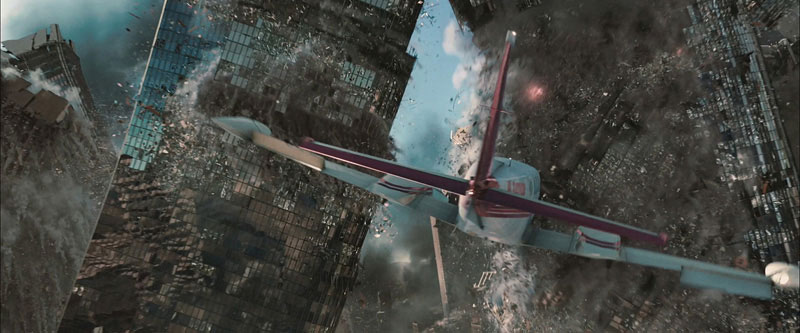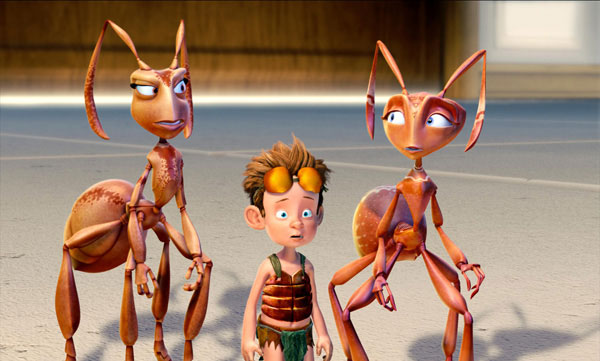نسخه فارسی
Interview by: Amid Rajabi
Hello Rudy, Let’s start from yourself. Would you please tell our readers about how you started and got interested in this major?
Hi there. My name is Rudy Cortes and currently I am a Senior Rendering TD at Blizzard Entertainment's cinematic department. I got started in 3D back in 1999. I had just moved to the USA and decided to leave behind my career as a graphic designer to pursuit a life long dream of mine, to work on animated or visual effects for films. Looking back I always had an interest for visual effects and animation, but the movies that changed me and made me want to be part of this industry where Terminator 2, Toy Story and Jurassic Park.
We know you through “Renderman” and the extraordinary book you’ve written about it. Would you please tell us about “Renderman”? Why did you choose that? What are the differences you see between “Renderman” and the other renderers?
Thanks so much for the compliment. It is very rewarding when you hear good reviews for something that you put a lot of effort into.
RenderMan is a rendering interface. It is made up of two parts, the RenderMan Interface Specification or RiSpec and the RenderMan Shading Language or RSL. The RiSpec handles scene description such as geometry, position of objects and lights, scene options and object attributes. The RSL handles appearance modeling through surface, displacement, light, volume or imager shaders.

I decided to learn RenderMan due to a recommendation of a very good friend who convinced me that even though it involved programming, and I had never done any programming before, it would be something that I could wrap my head around. I kept trying to learn, but nothing that I read made much sense. So I would read one chapter, get very confused and put the book back on the shelf. A couple of months later I would read the same chapter and understand a little bit more. This went on for about a year until I went to that year's siggraph conference. There I met a TD from Digital Domain and he explained to me that for every animator opening they would get over one hundred applications. However for every TD opening, specially RenderMan shader developers, they would only get one to four applicants and guess what? They usually had more openings for TDs than for animators.
There are many things that differentiate RenderMan renderers from others. Before I explain those differences I think we need to explain what a RenderMan renderer is. When people talk about RenderMan they are usually referring to Pixar's Photorealistic RenderMan, although there are other available renderers out there. Most of these renderers use a rendering algorithm known as REYES. REYES renderers are also known as “micropolygon renderers”. These micropolygons allow for extremely fast displacements. However I believe that the greatest difference is how powerful and customizable the renderer is. With a little bit of knowledge, a savvy TD can create very impressive rendering effects.
 We’re all aware that you’re using C++ and Python. Is it really necessary for someone who’s working in our major to learn programming?
We’re all aware that you’re using C++ and Python. Is it really necessary for someone who’s working in our major to learn programming?
I don't think it is absolutely necessary to learn programming to be able to have a successful career in CG. However, the number of people trying to get into the industry is constantly growing so the market is a lot more competitive now than it was 10 years ago. From experience I can say that if a studio has one opening and two applicants, and one of those applicants has scripting experience, that applicant will have a clear edge over the other applicant.
Which companies have you co-operated with? Which projects have you attended? What was your position in those projects?
My first film gig was at The Orphanage in San Francisco. I worked on Roland Emerich's “The Day After Tomorrow” and on “Sky Captain” as a generalist, mainly concentrating on lighting, fx and pipeline tools . Following I moved to Dallas, to work at DNA Productions on their second feature “The Ant Bully”. At DNA I worked mainly on shaders and tools for the look development and lighting departments.
In 2005 I moved to California to work at Disney Animation Studios. I was originally hired to work on what would eventually become “Tangled”. There I worked as a look development TD for “Meet The Robinsons”. After Disney I went to a small shop named Digital Dimension where I worked as a Senior TD, concentrating on pipeline, processes and tools.
My last gig on the film industry was Roland Emerichs 2012 where I worked as an FX TD as well as in pipeline and workflow tools. I then moved to Blizzard Entertainment where I currently work on shaders and proprietary tools.
Which among Shaders for Renderman do you like most and tell us why?
Well, surface shaders are the bread and butter of RenderMan developers. Personally I like procedural pattern generation quite a bit. I have not had the need to write procedural patterns in a while, but when I get to do it I really enjoy it.

Do you recommend Renderman for small studios or for short films and animations?
I wish I could, but the truth is that RenderMan requires a good deal of knowledge so that you can take advantage of its advanced features. RenderMan renderers are usually stand alone program for which you will need to write a good amount of code to make it usable by artists or to integrate it into a pipeline. On the other hand Pixar's RenderMan for Maya is a very polished product that could help a small studio use RenderMan.

In comparison with Renderman, which other renderer do you find more practical?
At the moment I am very impressed with V-Ray, but the one renderer that has really impressed me is Solid Angle's Arnold. It is a 100% monte carlo raytracer. It has very little knobs to control the renderer and it is really easy to get images to look good in a short amount of time. The only downside is that rendering an image in “final” quality will take longer than most scan line renderers, but as I said, it is really easy to make images look good. Basically more time is spent computing the frame than setting it up and computer time is a LOT cheaper than artist time.
Which among renderers do you recommend based on Renderman standards?
If you can afford it, then Pixar's PRMan is an obvious choice. If your funds are limited but you still need the control and speed, then 3Delight is another great renderer. For learning purposes Pixie or Aqsis are quite great as they are 100% free.

How you keep yourself updated? What are your data resources?
Thats the great thing about our industry, there is always more to learn and there are always constant advancements on technology and processes. I get a lot of info from Siggraph and from books. But mainly I keep updated by production needs. There is nothing like a deadline to make you figure stuff out fast.

Can an artist be a good teacher or trainer as well? What’s your idea about it?
Teaching is very, very hard. I have met plenty of very smart and talented CG artists or TDs who where just not good at teaching at all. Teaching is all about making a connection, about understanding what is the best channel to get to the student. Some students are very visual, others require analogies to understand and others, believe it or not, need a drill sergeant to literally push them until they get it. Thats why I enjoy teaching, because no two students are the same and it is a challenge to find out the right way to get to a student.
Many a man who are really interested in Renderman and maybe they dont have a good experince of coding in C++ and Python. What’s your advice for them? How do they start properly?
I hate pimping my own stuff, but If you want to learn how to write RenderMan shaders, then I really recommend my book “The RenderMan Shading Language Guide”. We put a lot of effort in the organization of the book materials to make sure that it would be an easy read for someone with little programming experience. I am also working on a new website named www.tdchannel.com which is designed to address the lack of technical training resources for the CG industry. It should be launching within the next month.
What’s your idea about CGphd website and online trainings?
I like that there are so many resources to learn these days. I see way to many people spend thousands of dollars on an education that they could have gotten for a fraction with the materials that are available for free or cheap. Cgphd, Animation Mentor, Fxphd they are all doing a great job and I hope that tdchannel.com will be able carve a niche in that market and help fill a hole in the training market.
We’re really appreciated for your time in advance.
It has been a pleasure talking with you guys. Keep up the good work.